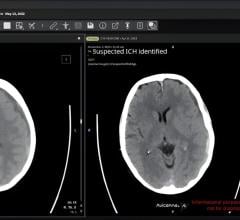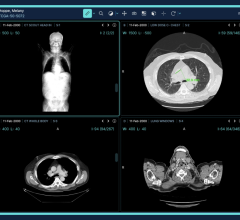In today’s complex healthcare landscape, protecting sensitive patient information is a top priority. To that end, industry regulations are increasing and complying with HIPAA and HITECH regulations is becoming more costly, even as reimbursement rates drop.
To add to this problem, costs associated with medical imaging continue to rise. Imaging facilities typically have to upgrade equipment every three to five years, which places a huge burden on their financial resources.
In light of such expenditures, one expense that may be overlooked is the need for storage space for medical images. The hidden costs associated with this storage are not trivial. Aside from hardware, there will be staff time to back up and manage the storage and related software licenses, power, cooling, and not to mention the cost of the real estate itself. Healthcare facilities need to find a way to increase their storage capacity while remaining within limited capital and operating budgets.
Current best practices require medical facilities to maintain two copies of images, in geographically separate locations. Because guidelines regarding how long records should be retained are not always well defined, many providers are retaining all of their images indefinitely.
Most of these images are never accessed after the first few years, so a healthcare facility may have a data center full of unnecessary records, preventing the facility from storing newer, more relevant images. Combined with the fact that the number of imaging procedures is rapidly growing (8 percent per year over the last decade), industry-wide storage needs are increasing by 20 to 25 percent year over year.
Collaboration Challenges and Disaster Recovery
Alongside the problem of sufficient storage space is the need for clinicians to share images. Due to the decentralized nature of the healthcare system, primary care providers, specialists and imaging services are rarely located in the same facility, making it challenging to share information about a particular patient. This presents a series of security and logistical challenges.
For lack of a better system, sharing of medical images has typically been done through the transfer of physical media. But sending discs through the mail or sending them with a patient poses an obvious risk of loss or theft, compromising the patient’s privacy. Additionally, proprietary wrappers and encryption can render even DICOM-standard files useless at the receiving provider. The most common alternative, utilizing a VPN to share images digitally, requires significant effort and expense to implement and maintain.
Our healthcare industry continuously adopts the most state-of-the-art equipment for patient care; isn’t it time to implement the most cutting-edge technology for information management? Expensive equipment is worthless if the data gathered gets lost or corrupted.
According to the International 2010 Data Management Healthcare Survey, healthcare IT executives listed disaster recovery as their No. 1 investment priority for 2011. Implementing such a plan can place yet another burden on an already strained budget, but the need to recover lost data is a real concern.
Finding the Ideal Solution
As healthcare staff try to deal with these complex issues, they should keep in mind that simply adding more digital storage space only addresses part of the problem. In maintaining this data, only 50 percent of costs go toward the software and hardware; the rest goes toward maintaining the facilities and staff necessary to manage onsite data and provide necessary support.
The ideal solution to medical imaging storage should address all of these concerns. By moving to a service that hosts data offsite, the costs of personnel and facility maintenance are reduced or eliminated. Also, there is no need to migrate the data to a new system as new equipment is introduced at regular intervals.
These services also offer economies of scale, so the storage cost per terabyte is greatly reduced compared with onsite storage. Facilities utilizing an offsite solution would see savings of 25 to 50 percent compared to maintaining onsite storage. In addition to cost savings, the risk of data loss is greatly reduced when selecting a service that keeps a redundant copy of your files.
The image storing service a practice selects should also allow for file sharing between clinical staff in different locations, and it should do so without the need for new software installation. Data should be accessible from any computer with an Internet connection, without the need for implementing a VPN, and it should be secure enough that only those granted permission may access it. Additionally, any data containing ePHI should be encrypted at rest and in motion.
Because costs are rising throughout the healthcare industry and the need for medical image storage space continues to grow, healthcare facilities need to rein in expenses. Contracting with an offsite data storage service can provide several advantages, but medical practices should look for a provider that can solve multiple problems by reducing digital image storage expenses, providing data recovery in the event of a disaster and making it easier to share images between clinicians over the Internet.


 December 01, 2025
December 01, 2025 









